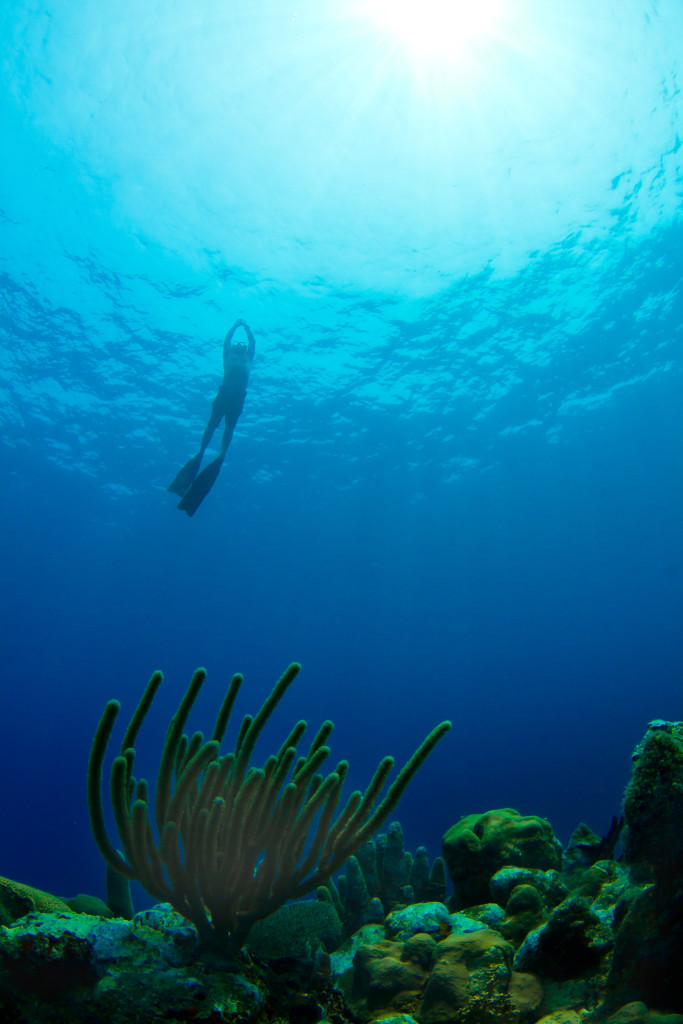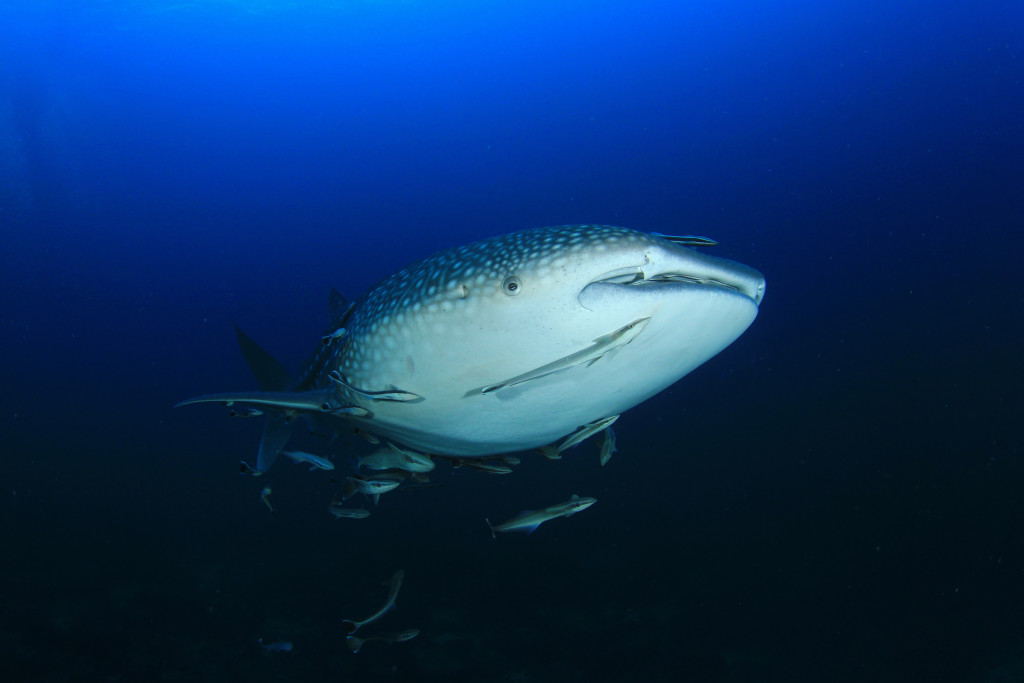Often we look for key ingredients when choosing our next scuba spot: vibrant reef systems, macro photography opportunities, wrecks, larger animals like dolphins or whale sharks, deep wall diving, advanced training opportunities and proximity to dive sites. Sometimes we also take the culture and lifestyle of the destination into account. It’s rare to find all these ingredients in one destination, unless you’re headed to the Bay Island of Utila, off Honduras’ north coast in the Caribbean Sea.
Utila is one of the least developed and commercialized Caribbean islands and is popular among divers of all backgrounds and ages, from backpackers to experienced divers seeking a whale-shark encounter, to divers seeking their professional PADI or technical training. Visibility on the island typically ranges from 40 feet to 100-plus feet (12 to 30 m) and water temps range from 78 F in the winter to 88 F in the summer (25 to 31 C). Currents are minimal, although they can be moderate to strong on the offshore seamounts.
To understand what makes the best dive sites in Utila so diverse, it helps to take a look at the geographical formation of the Bay Islands. They are the peak of an underwater mountain structure known as the Bonacca Ridge, which lies about 40 miles off the coast of mainland Central America. Utila’s south side features a shallow fringing reef, as well as deeper seamounts. The north side of Utila is more exposed to open ocean, and this is where the geology of the island meets the Cayman Trough or Trench, making for some spectacular wall dives. Below are our picks for the best dive sites in Utila, in each of the three environments.
The Best Dive Sites in Utila

South Side
The southern side of Utila features shallow, fringing reefs that cover a total distance of about 5 miles (8 km). This southern reef system, anything from a five to 30-minute boat ride from the main harbor, features about 15 prominent dive sites with over 20 buoys in place. Dives start from depths of 20 feet (6 m) and drop to an average of 40 to 60 feet (12 to 18 m), although some are as as deep as 100 to 130 feet (30 to 40 m).
Jack Neil Point and Jack Neil Beach are both great long, shallow dives along the tongue-and-groove formations of hard and soft corals. At the western end of the reef here, sightings of hawksbill and green turtles are common. There’s also a wide range of Caribbean reef fish, from grunts to groupers, damselfish, spotted drums, pufferfish, trunkfish, seahorses, and turtles, eagle rays and moray eels.
Other great south-side sites include Black Coral Wall and Pretty Bush, both macro photographers’ dreams. Airport Caves offers beautiful caverns and swim-throughs, with hundreds of glassy sweepers hiding inside.
Utila’s south side also features a number of seamounts, underwater hills and mountains rising off the ocean floor to between 40 and 100 feet (12 to 30 m) from the surface. Being offshore, these sites tend to have more vibrant coral coverage, as well as higher fish density and diversity, though currents and a free descent can make them slightly more challenging dives. The seamount Black Hills is a must-dive if conditions allow.

North Side
The north side of Utila is more exposed to open ocean, and this is where the geology of the island meets the Cayman Trench. Here there’s a protected marine reserve named Turtle Harbor and although the tops of the reef walls start at depths of 30 to 40 feet (9 to 12 m), they immediately drop away to depths of several thousand feet. The topography of the north side includes swim-throughs, pinnacles and caverns. Technical divers on deeper dives have seen stalactites in some of the caves, formed when this ridge sat above sea level. As well as similar aquatic life to what you’ll see on the south side, north side sites feature more encounters with sharks, barracuda, marlin, dolphins and whale sharks, though the latter are more likely to be seen on boat rides as opposed to on the dive sites.
Popular north-side sites include CJ’s Drop Off, with an extreme sheer wall; the Maze, which offers a labyrinth of spur-and-groove formations; Duppy Waters, a wall dive with giant sponges; and the Pinnacle, which offers unique rock formations and a deep swim-through. Not all north-side sites are extremely deep; Jack’s Bight has many caverns at depths of 40 to 60 feet (12 to 18m) and makes a great drift dive.
Something for everyone
With three very different types of reef systems and a diversity of dive types, Utila offers something for everyone, from the beginner to the expert. PADI certifications are affordable, and local hotels range from basic backpacker accommodation to comfortable resorts.
Still a very traditional Caribbean island, the local community is immersed in the workings of the local dive industry. There are no international hotel chains, and the island is dotted with affordable budget eateries, with cuisine from around the world. There are plenty of waterfront bars for a sundowner, and the parties continue into the night as well for those who are so inclined. With the great value offered on Utila, as well as the underwater diversity and the topside entertainment, it’s time to put Utila on your bucket list — just know that you may never leave.
The post The Best Dive Sites in Utila appeared first on Scuba Diver Life.